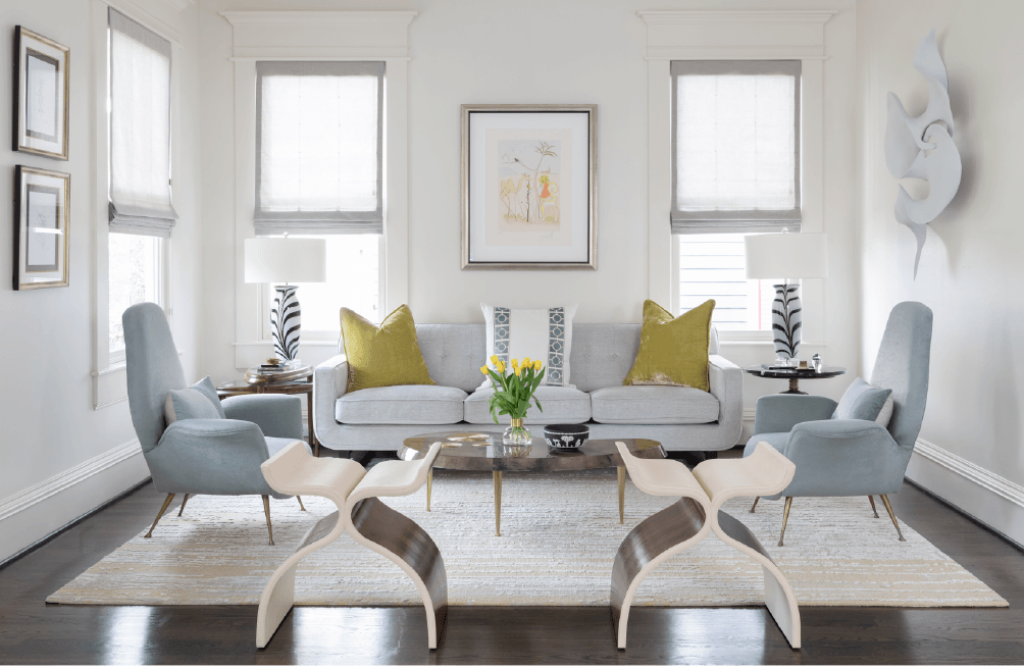Some people prefer a minimalist approach when it comes to furnishing their homes, while others lean more lavish. But we’ve found that the majority of people fall somewhere in between. You don’t want your home to feel cold but you’re also not interested in being buried under a mountain of stuff.
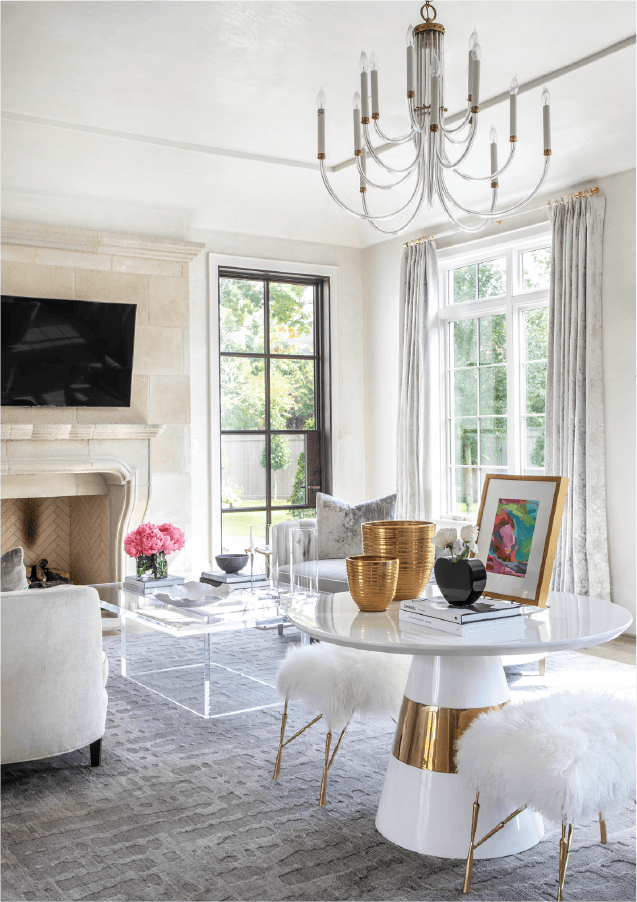
As with most things in life, balance is key and, when your goal is a tailored, cohesive space, we always suggest starting with a premium rug. Area rugs anchor your room, providing a solid foundation for the design elements to come. But with so many options on the market, how do you choose the right rug for your home? Keep scrolling for a few tips from our team on how to choose the perfect rug.
Perimeters and Parameters
Before you start hunting for a rug, you need to consider the layout of your room, including whether you plan to have multiple zones within the same space. If you’re working with a fairly large room, you may have separate areas in mind for particular groupings of furniture. Will one large rug suit your needs or do you need multiple smaller rugs?

If, for example, you have a spacious master bedroom, you might want a large rug to go under the bed and a smaller one near your vanity or seating area. If you have an expansive or open-concept living room, you might want one area to feature a sofa and chairs arranged for media viewing, as well as a separate, smaller seating area with chairs and a game table for socializing. This is the perfect opportunity to invest in multiple area rugs that will help to outline the perimeters of each zone.
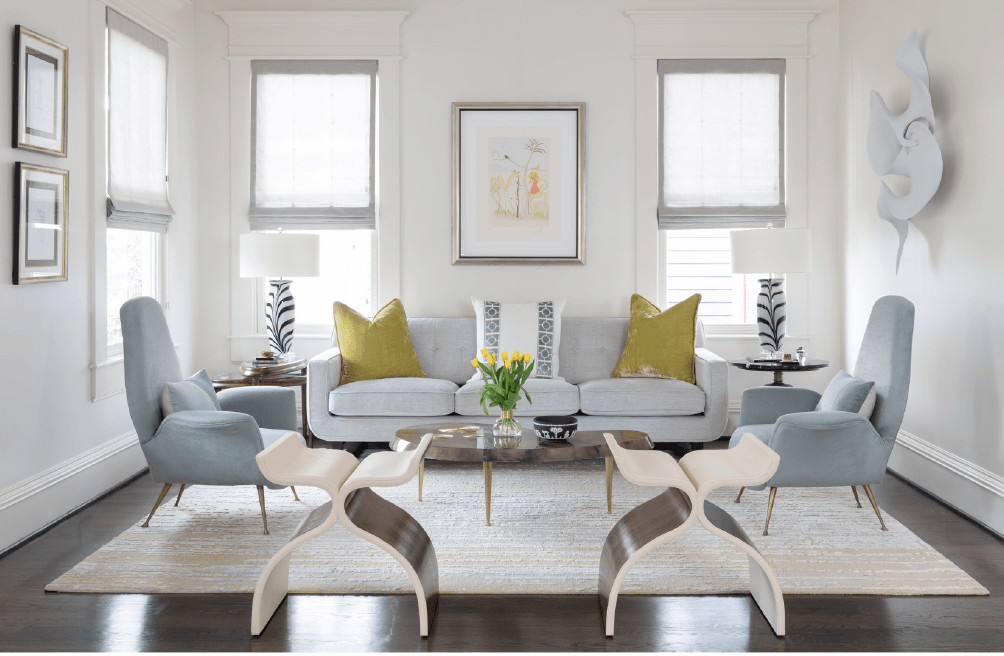
On the other hand, you might be working with a smaller space, or you may prefer only a single seating area. In this case, you’ll probably want a much larger area rug to spread out under all of your furnishings. Knowing what you intend to place in a room and having a plan for arranging each item will help you determine the size and number of rugs you need to be shopping for.
Size Matters
Now that you’ve settled on the number of zones and where your rugs will lie, it’s time to consider the sizes you’ll need. Note the measurement of your room to ensure that the rugs you choose won’t exceed the boundaries imposed by walls, stairs, or other permanent structures.
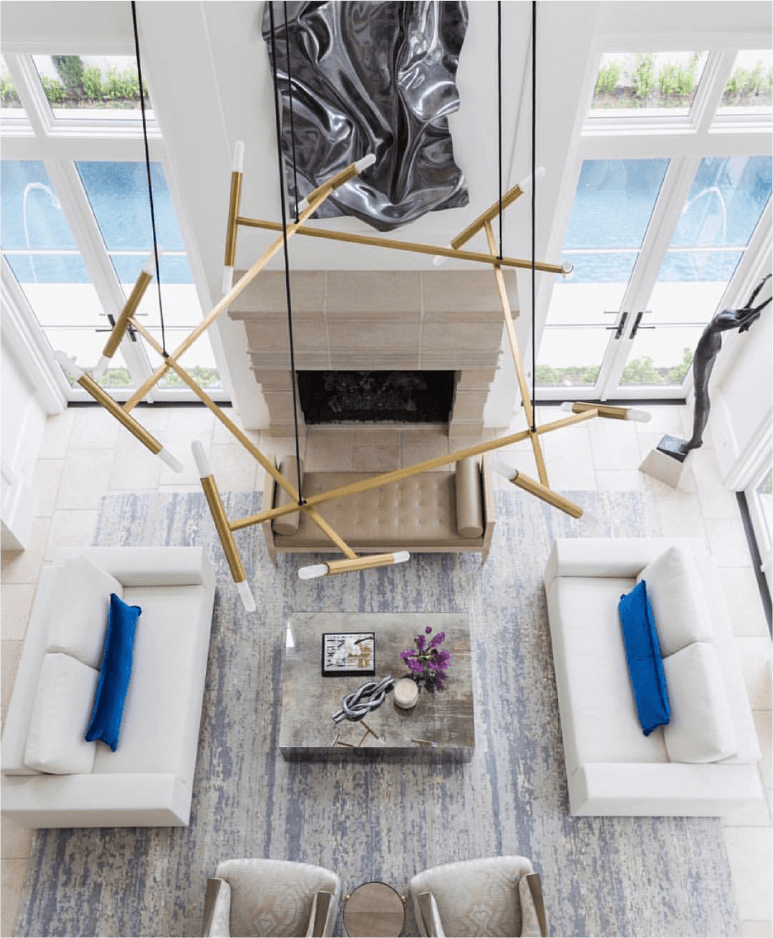
Next, try laying out furnishings where you want them to sit. This detail is important because you need to decide if furniture will stand completely on the area rug, or if you’re okay with just the front legs.
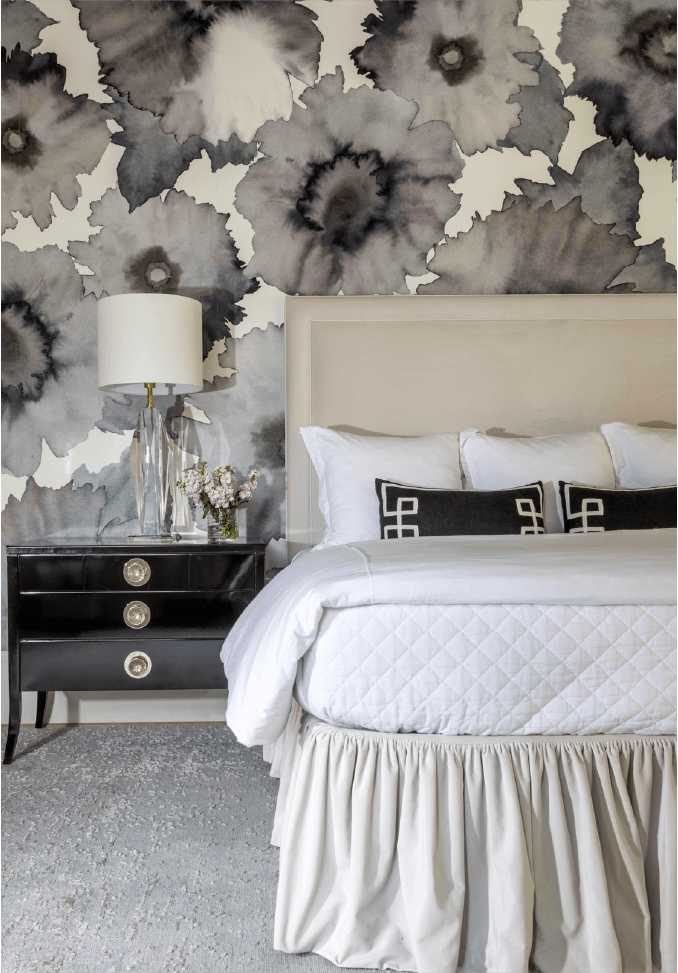
Typically, your area rug should exceed the perimeter of furnishings such as sofas, chairs, and tables in a select zone. If a rug is too small or furnishings are too large, it can make the space feel awkward and cramped. Undersized rugs that don’t sprawl out to meet your furnishings end up looking like a separate design element instead of a luxury piece that ties everything together.

Color Considerations
Whether you have existing furniture or you’re planning to buy new, the rug colors you select should anchor your space, offering a wonderful opportunity for you to tie everything together. But how can you be sure it works?
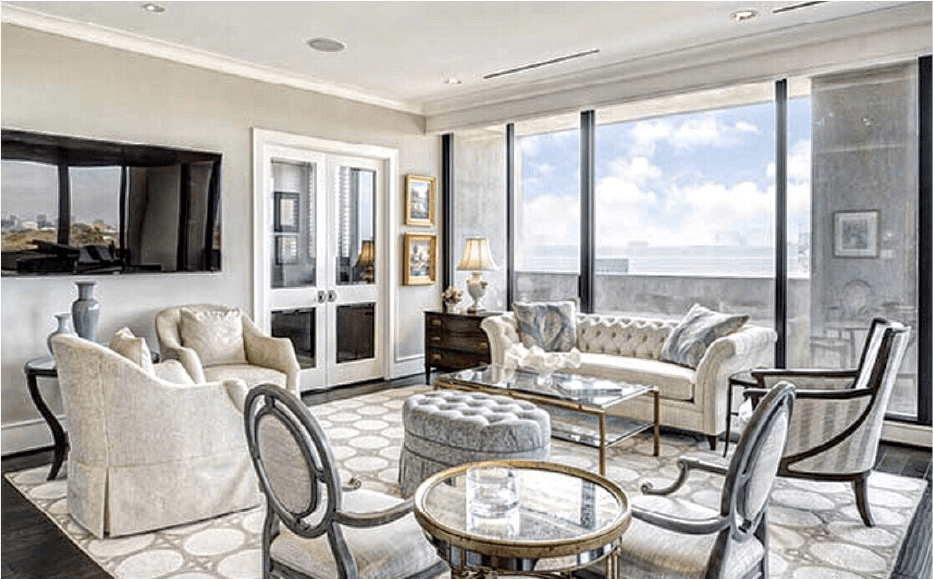
Start by choosing a rug you love. Regardless of color, a quality rug will stay with you for a lifetime and will get passed down as an heirloom, whereas mediocre pieces will likely be replaced or thrown away. Opting for a neutral palette ensures your rug will go with anything, but if something more vibrant catches your eye (or heart), embrace it. Because when you choose a rug you love, you’ll find joy in making everything else around it work.
Visual Interest
One final thing to consider is depth. If you want your area rug to serve as the focal point of your design, consider selecting one that features texture and layers for increased dimension and visual interest. This could be a patterned rug with visual texture or the layering of a larger rug in rough, woven fibers beneath a smaller, vintage one for a unique dose of dynamism.
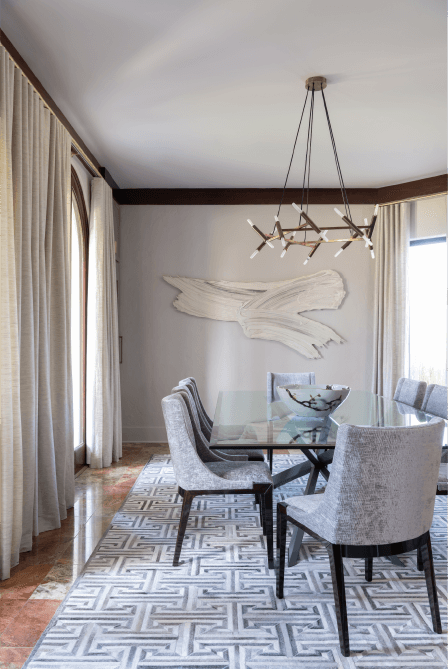
Still have questions? Drop by our Houston showroom where you can visit with an expert and experience thousands of handcrafted rugs in person!
